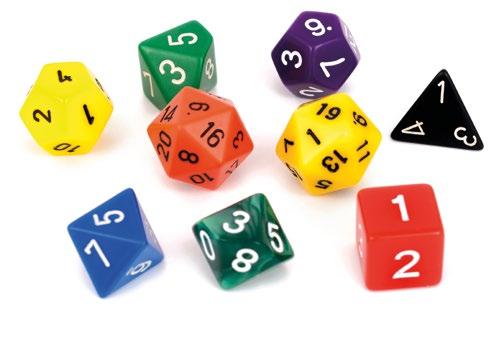
4 minute read
Judging achievement − an Italian perspective
from Endocrine Views (ESE News) Winter 2021 (News and Views European Society for Endocrinology) Issue 47
and educate the next generation of reviewers and editors, which both Endocrine Connections and European Journal of Endocrinology (EJE) have recently launched. You may apply to join the Editorial Board of Endocrine Connections (https://ec.bioscientifica.com/page/jointheboard/jointhe-editorial-board) or to be selected for the EJE Rising Star Reviewer Board which, from 2022 onwards, will feature outstanding mid-career
REFERENCES
Advertisement
1. Academy of Medical Sciences 2015 Reproducibility and Reliability of Biomedical Research https:// acmedsci.ac.uk/policy/policy-projects/reproducibility-and-reliability-of-biomedical-research. 2. Else & Van Noorden 2021 Nature 591 516−519. 3. Clark & Buckmaster 2021 Endocrine Connections 10 E3–E4. 4. Bohannon 2013 Science 342 60−65. 5. Fang & Casadevall 2011 Infection & Immunity 79 3855–3859. researchers whose career and publication trajectories indicate that they will be suitable to be considered for an EJE Associate Editor post in the (not-too-distant) future.
Journals owned and run by learned societies are arguably more reliable than those owned and run by commercial entities. The authors of this article can assure you that, as Editors-in-Chief, we do everything in our power, and with the help of our outstanding Editorial Boards, to ensure that the content of our journals is valid and reproducible.
Adrian Clark
Editor-in-Chief, Endocrine Connections
Wiebke Arlt
Judging scientific production:
an Italian perspective
The process of measuring individuals’ achievement is valuable, agree Maria Chiara Zatelli and Daniele Gianfrilli, but how this can be achieved equitably is not so clear.
Ever since I entered science, I have been told that if you cannot measure something, then it does not exist. Metrics employed to measure scientific relevance and personal contribution to scientific results (and therefore to publications) should be, therefore, a very good means by which to understand whether I am really good at science, or work enough just to survive in the challenging world of ‘either publish or perish’. But how are these metrics used in my academic environment, in Italy?
In Italian academia, career progression from postdoctoral fellow, to researcher (non-tenure track), to researcher (tenure track), to associate professor and then to full professor is regulated by competitive exams announced by each university based on research, teaching and clinical assistance needs (as applicable). To be eligible to participate in these competitive exams, everyone needs to pass the national scientific qualifying examination (Abilitazione Scientifica Nazionale, ASN).
A group of experts (Commissione Nazionale), chosen by the Ministry for Universities and Research (MUR) from among the top Italian academic scientists in each field, evaluates the entries they receive from colleagues who want to pursue an academic career. This non-comparative evaluation is based on scientific production, teaching, academic titles, involvement in scientific societies, participation as a member of an editorial board of an international scientific journal and fund-raising capacity.
And how is scientific production evaluated? By using metrics: to be considered eligible for each academic step, one needs a specific number of published papers, number of citations and h-index in the last 5, 10 or 15 years, depending on whether you are applying for associate or full professor. If you do not have the necessary parameters, you cannot advance career-wise, independently of the evaluation of the other aspects and academic qualifications.
Therefore, these parameters are crucial for our careers. Indeed, after you attain the ASN, they are also taken into account when participating
in competitive evaluation to run for a position in a specific university. The higher, the better: it’s more likely you’ll surpass the other candidates.
Similarly, metrics are used to evaluate a researcher or a research group when applying for competitive grants announced by the MUR. Frequently they are also used to rank the principal investigators of competitive research applications submitted to private foundations. In these cases, in addition to the previously quoted metrics, the total impact factor of the principal investigator may also be considered. Another parameter that may also be evaluated is whether the researcher appears as the first or last name on a published paper, to assess the specific contribution of each author.
All or some of these parameters, along with exam tests, are also assessed in competitive evaluations of candidates applying for medical, non-academic positions in a public hospital, both when hiring a doctor and when promoting an employee to a higher career level.
Consequently, we are constantly being measured before, during and after achieving a position. This is actually good, I believe, because each one of us is always stimulated to perform well.
However, in my opinion, these metrics may not reflect the real value of the researcher, or of the performed research. Indeed, researchers belonging to big research groups (with high availability of resources) may take advantage of lobbying their colleagues, sharing research results and therefore having their names on the group’s publications, quoting their pals’ papers, connecting with other big groups, and gaining visibility and credits in order to raise funds. Small groups with few researchers may be disadvantaged despite being very productive, since they will never reach the same numbers, and fund-raising will become more and more difficult.
Normalisation and extension criteria should be identified to reach equity in evaluating scientific production. However, how this should be performed remains a matter of debate.
Maria Chiara Zatelli
Section of Endocrinology, Geriatrics and Internal Medicine, Department of Medical Sciences, University of Ferrara, Italy
Daniele Gianfrilli
Department of Experimental Medicine, Sapienza University of Rome, Italy





